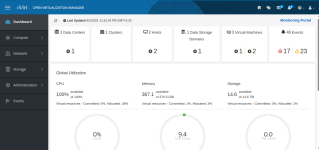Are there any plans to introduce native Fibre Channel (FC-SAN) support with full snapshot and shared storage capabilities in upcoming Proxmox VE releases?
Currently, it’s possible to work with FC using multipath and LVM, but the lack of snapshot support and true shared storage integration limits its usefulness in enterprise environments—especially when compared to VMware and similar platforms.
This enhancement would significantly increase Proxmox's competitiveness in virtualization setups where high-performance SAN infrastructure is already in place.
Any insights or roadmap details would be appreciated.
Thanks!!!
Currently, it’s possible to work with FC using multipath and LVM, but the lack of snapshot support and true shared storage integration limits its usefulness in enterprise environments—especially when compared to VMware and similar platforms.
This enhancement would significantly increase Proxmox's competitiveness in virtualization setups where high-performance SAN infrastructure is already in place.
Any insights or roadmap details would be appreciated.
Thanks!!!


